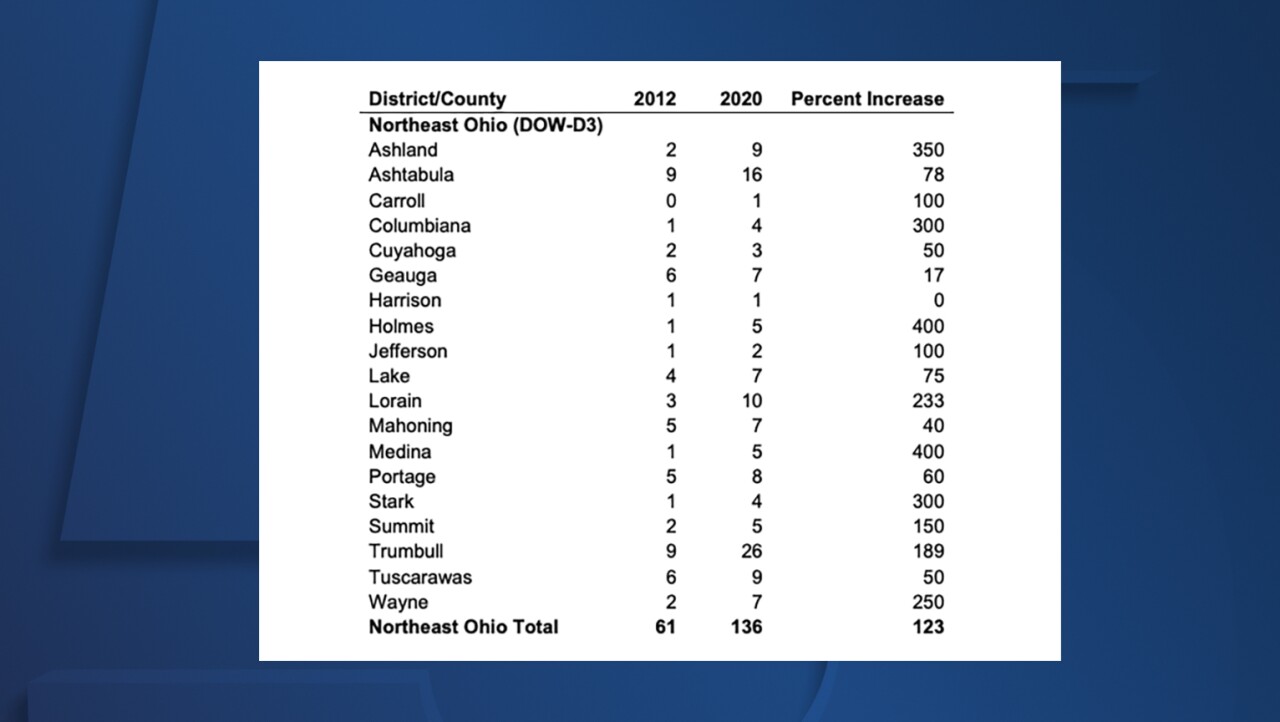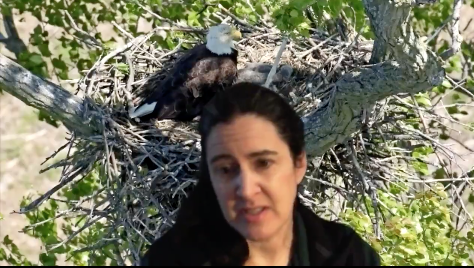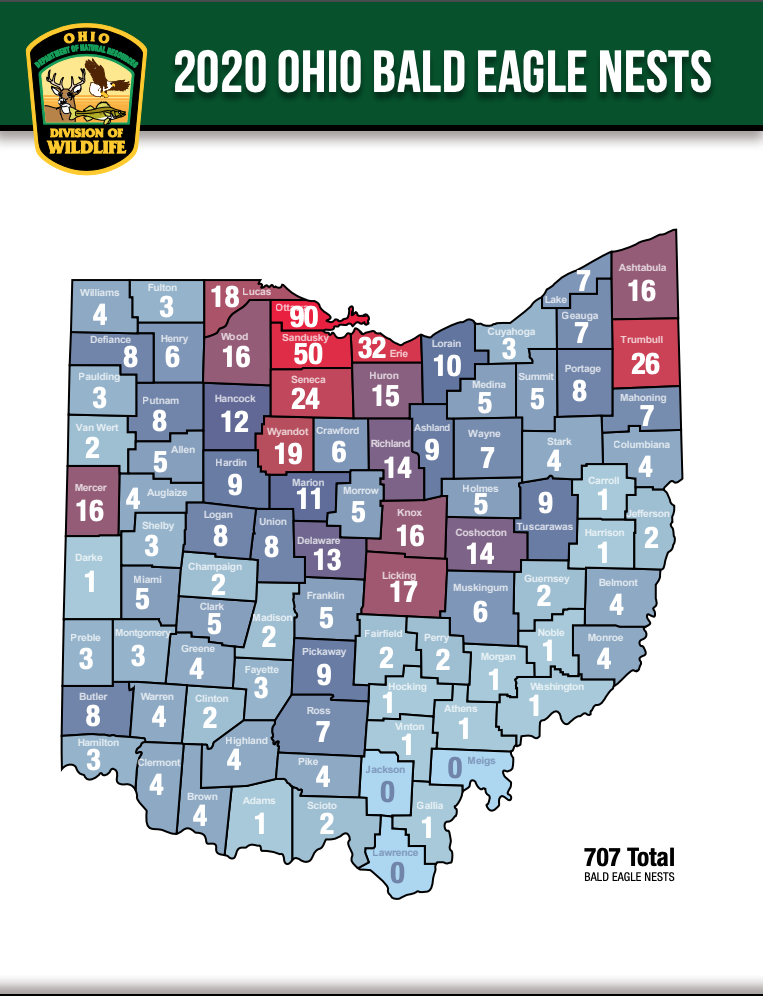CLEVELAND — Facing a relentless global pandemic, the last year has been tough for many of us, but there is one group in Ohio doing better today than compared to a few years ago -- the state's bald eagles.
For America’s bird, January, too, is a fresh start— a critical time when adult bald eagles resume courtship with each other in dazzling aerial displays. It’s also a time when eagles bond through nest-building— a sight becoming more common in Northeast Ohio as the population continues to improve.
It’s because of nest-building that anyone who spends time outside may notice more activity of these awe-inspiring birds perched high above barren trees throughout Northeast Ohio, where bald eagle sightings have increased by 300% in some counties since 2012, according to data released by the Ohio Department of Wildlife.

In 2020, a statewide nest census conducted by biologists from ODNR documented 707 nests throughout the state of Ohio— a number much higher than previous years. Between 2012-2019, nest numbers were estimated from a sample of survey areas rather than an expansive survey like ODNR did in 2020 when a pilot literally flew over reported nests to confirm 2,500 public reports.
“It just took a lot of resources and staff time, plus our pilots spent quite a bit of time in the air confirming, and we had like over 700 nests,” Ohio Division of Wildlife Biologist Laura Kearns said of the statewide survey in a Zoom interview. “So it was pretty exciting. And we didn't anticipate that there were quite that many nests in the state based on our previous ones.”

Kearns said that normally the same pilot and a pair of wildlife biologists would resurvey the areas in late May or early June where nests were counted to see how many eaglets hatched, which is how the department receives its productivity estimates, but a global pandemic changed research methods.
“We weren’t able to do that [survey] because of COVID restrictions. Fortunately, with just counting nests, our pilot was able to do that himself. But in May, when we would normally do those productivity surveys, we were still uncomfortable with having two people in a small aircraft with our pilot because it’s the kind of survey where you have to get a little bit closer to the nest,” she said.

The comeback of the eagle population from a low of four breeding pairs in 1979 to 707 nests documented in the state last year continues to surprise wildlife biologists like Kearns who have been documenting their growth and presence in the state for years.
“I think we're still just kind of completely astounded by, oh, my gosh, there were over 700 nests in the state. And I guess the other kind of astounding fact was the distribution that we had in Ohio. We found at least one nest in 85 of the 88 counties,” she said.

So, while it's unknown how many eaglets were produced in the 700 nests recorded in 2020, Kearns said data from the last 10 years, from 2010-2019, showed every nest averaged about 1.4 eagles, and 2021 is expected to yield around the same number.
“That’s well above the standard of one eaglet per nest that is important for keeping the population stable; 1.4 doesn’t seem like a lot, but it is, in terms of productivity,” she said.
Kearns is hopeful that wildlife biologists will be able to resume aerial production surveys in late May or early June, depending on restrictions and precautions due to the pandemic.
"I guess hopefully as long as we're wearing masks, I can go up with our pilot in March and do our survey area and then go back in May and confirm how many eaglets are in the nest," she said.
And since January is a prime time to see eagles in full courtship and nest-building mode, photographers in Northeast Ohio have seen eagle movement at the bald eagle nest located in the yard of Redwood Elementary in Avon Lake.
On Jan. 12, photographer and eagle watcher Marianne Maverick captured a pair of eagles, affectionately named Stars and Stripes, building a nest and bonding ahead of egg-laying in late winter and early March.

Over the years, eagles like the ones in Avon Lake have adapted to building nests in populated areas, making it much more likely that someone would be able to see one in their backyard.
"And so now they're just everywhere. It's [an eagle] just something that anybody in the state has the potential to see an eagle, really," Kearns said.
Wildlife experts urge the public to respect their space and stay at least 100 yards away from the bird or nest. Disturbing bald eagles at the nest site could lead to the abandonment of eggs.
Known locations of bald eagles:
- Magee Marsh Wildlife Area, Ottawa County
- Killbuck Marsh Wildlife Area, Wayne County
- Mosquito Creek Wildlife Area, Trumbull County
- Pickerel Creek Wildlife Area, Sandusky County
- Ottawa National Wildlife Refuge, Ottawa County
- Pinery Narrows area north of Station Road Bridge Trailhead in Brecksville



